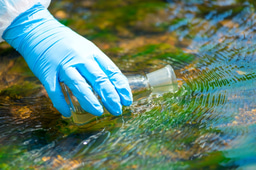Microbial sensitivity testing in the dairy industry
Published in Microbiology, Protocols & Methods, and Zoology & Veterinary Science

The dairy industry is a cornerstone of global food security and nutrition and faces challenges due to rising incidents of antibiotic resistance related to Staphylococcus aureus. Antibiotic resistance in bacteria poses a serious threat not only to dairy animals but also to public health as resistant strains can be transmitted through food products. The implications of this issue are concerning, influencing not only the economic viability of dairy operations but also the overall sustainability of our food systems. Therefore, it is vital to strengthen our knowledge surrounding microbial sensitivity testing. The "Microbial Sensitivity Testing in Dairy: Staphylococcus aureus and Antibiotic Resistance" collection in Dairy Science and Management aims to address this issue by focusing on microbial sensitivity testing methodologies and alternative treatments for antibiotic-resistant infections. Topics of interest include but are not limited to:
- Microbial sensitivity testing methodologies
- Resistance mechanisms in Staphylococcus aureus
- Epidemiology of staphylococcal infections in dairy
- Alternative treatments for antibiotic-resistant infections
- Impact of antibiotic use on dairy herd health
- Policy implications for antibiotic stewardship
- Consumer perceptions of antibiotic use in dairy
- Technological innovations in microbial diagnostics
“Microbial Sensitivity Testing in Dairy: Staphylococcus aureus and Antibiotic Resistance” is led by Jayesh J. Ahire, Dr. Reddy's Laboratories, and Luís Augusto Nero, Universidade Federal de Viçosa. The collection accepts original research, reviews and methodologies. As a new open access journal, we are able to cover the article processing charges for publications.
Jayesh J. Ahire, PhD, Dr. Reddy's Laboratories, India
Dr. Jayesh J. Ahire is a Product Development & Tech Transfer Specialist at Dr. Reddy's Laboratories, Hyderabad, India. He received Ph.D. Microbiology (2013) in the field of probiotics and its biogenic metabolites from North Maharashtra University, Jalgaon, India. Later, from March 2013 to April 2018, Dr. Ahire worked as a Postdoctoral Researcher in the Department of Microbiology, Stellenbosch University, Stellenbosch, South Africa and explored research on Nanotechnology and Microbiology.
Professor Luís Augusto Nero, DVM, Universidade Federal de Viçosa, Brazil
Luís Augusto Nero, DVM and food microbiologist, is professor since 2005 of food inspection and food microbiology in the Viçosa Federal University, Brazil, with research interests on foodborne pathogens and lactic acid bacteria. Food production chains are the main focus of his studies, with characterization of the contamination routes and distribution of different bacteria and exploration of their beneficial potential for the dairy industry. Antimicrobial resistance is a current topic of interest due to the potential impacts on human and animal health.
Follow the Topic
-
Dairy Science and Management

This is an open access peer-reviewed journal that aims to publish innovative research about the management of dairy animals, the production of dairy products and the related food security considerations.
Related Collections
With Collections, you can get published faster and increase your visibility.
Microbial Sensitivity Testing in Dairy: Staphylococcus aureus and Antibiotic Resistance
The dairy industry is a cornerstone of global food security and nutrition, yet it faces significant challenges due to the rising incidence of antibiotic resistance, particularly related to Staphylococcus aureus and its associated staphylococcal infections. As we continue to advance our collective understanding in this area, we can better equip ourselves to develop effective management strategies that will safeguard animal health, enhance dairy production, and ultimately contribute to the well-being of consumers.
Antibiotic resistance in bacteria poses a serious threat not only to dairy cattle but also to public health, as resistant strains can be transmitted through food products. The implications of this issue are far-reaching, influencing not only the economic viability of dairy operations but also the overall sustainability of the food system. Therefore, it is crucial to deepen our knowledge surrounding microbial sensitivity testing. This can aid in identifying effective treatment protocols and minimizing the development of resistant strains.
Recent advances in the field have demonstrated the potential of rapid microbial sensitivity tests, allowing for quicker diagnosis and treatment decisions. Techniques such as molecular diagnostics and whole-genome sequencing have significantly improved our understanding of the genetic determinants of antibiotic resistance in Staphylococcus aureus . Moreover, research into alternative therapies, including probiotics and bacteriophages, shows promise in mitigating the risks associated with antibiotic use in dairy herds.
We invite researchers to contribute to this special Collection, as your insights and findings are essential for addressing the challenges posed by antibiotic resistance in the dairy sector. Topics of interest include but are not limited to:
- Microbial sensitivity testing methodologies - Resistance mechanisms in Staphylococcus aureus - Epidemiology of staphylococcal infections in dairy - Alternative treatments for antibiotic-resistant infections - Impact of antibiotic use on dairy herd health - Policy implications for antibiotic stewardship - Consumer perceptions of antibiotic use in dairy - Technological innovations in microbial diagnosticsThis Collection supports and amplifies research related to SDG 2, Zero Hunger.
All submissions in this collection undergo the journal’s standard peer review process. Similarly, all manuscripts authored by a Guest Editor(s) will be handled by the Editor-in-Chief. As an open access publication, this journal levies an article processing fee (details here). We recognize that many key stakeholders may not have access to such resources and are committed to supporting participation in this issue wherever resources are a barrier. For more information about what support may be available, please visit OA funding and support, or email OAfundingpolicy@springernature.com or the Editor-in-Chief.
Publishing Model: Open Access
Deadline: Feb 13, 2026





Please sign in or register for FREE
If you are a registered user on Research Communities by Springer Nature, please sign in